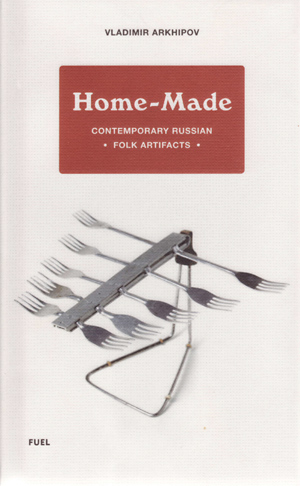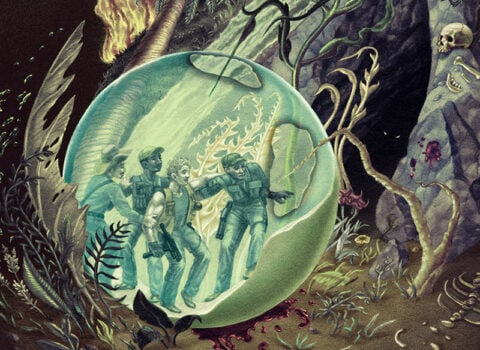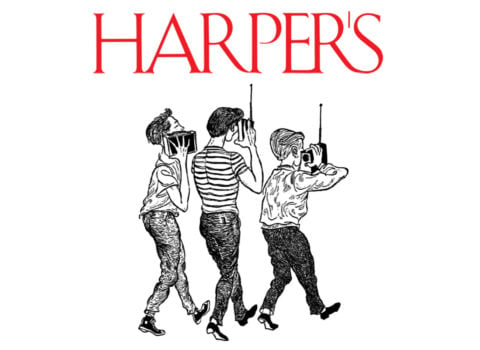
One of the more charming books I’ve come across recently is pictured at left. I suppose Home-Made (Fuel Publishing) would qualify as a coffee-table book (if your coffee-table is about eight inches square). Assembled by contemporary Russian artist Vladimir Arkhipov, the book is a devotional text in honor of the human need to invent–in this case to invent things that already exist. Thrift is the motivator behind such redundancy: if you can’t afford a new television antenna, why not make one out of forks?
Home-Made is a distillation of over a thousand such objects that Arkhipov has collected over the years into what he calls “The People’s Museum of Home-Made Objects,” some two hundred peculiar pieces of human industry. “In 1994,” Arkhipov writes, “I saw, at an acquaintance’s dacha, an unusual hook on which clothes were hanging. It was made from an old toothbrush, without bristles, and had been obviously bent over a fire. There was something strange in that moment of recognition. I immediately saw the light, as it were, and recalled similar things that I knew, belonging to my relatives, friends, acquaintances.”
Each of the objects in the book is named (“BOOT HANGER”), then followed by the name of the inventor (“VASILII BOBROV”), then by the inventor’s first-person narration of the invention (“It’s just an absolutely primitive boot hanger… I just bent mine out of odd bits of wire that came to hand”), and finally, of course, a photo of the object (this one looks like a pair of enormous spectacles mated with a question-mark). The book is crammed with hockey sticks, aerials, toy locomotives, back massagers, and stories. Whimsical without trying to be and inspiring in its way, Home-Made makes you wonder not so much why you’d buy anything as why you wouldn’t first try to make it out of a plastic jug, a bicycle wheel, a peach pit, a tennis ball cut in half, and an old abacus. And while some of the devices seem a bit dodgy (there’s a sort of razor in there I’d run from) the stories of their inventors are solidly involving.





